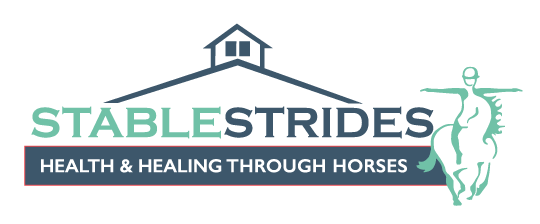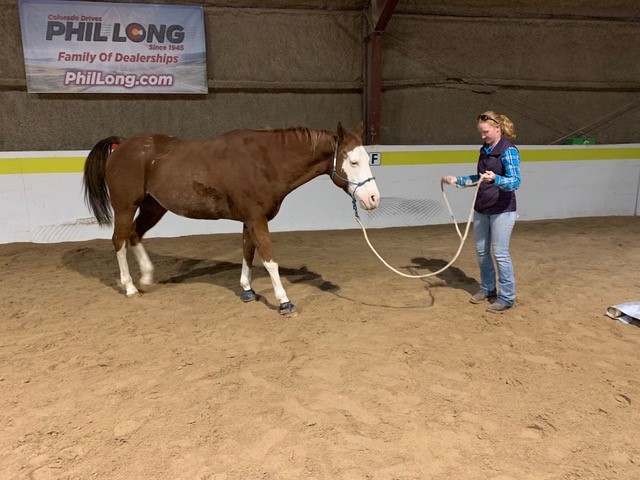By Chester DeAngelis, Program Director
“A big piece of why large accrediting organizations of equine assisted therapies either recommend, or even require, co-facilitation, is because safety is the priority. Safety of the client, the horse, the team, and the space. With co-facilitators, both physical and emotional safety are provided and protected. In the extreme example, incorporating two professionals in each session allows for crisis planning. If any member of the “Diamond” is feeling unsafe in any way, the facilitators can each tend to one of the participants, without neglecting the other’s needs. When you think about the sessions further than safety, and start to look at how to comfortably engage in the session- the ability to prioritize everyone’s engagement still rings true when the session is co-facilitated. If the animal is uncomfortable in the work, they will not be genuinely engaged in the space. Co-facilitators are able to tend to each of the participant’s comfort needs, enabling them both to be a primary focus in the session. The horse’s needs are never a second priority, neither are the client’s. We’re proud of that here at StableStrides.
“Let’s face it, horses are large. They take up a lot of the physical space. Horses are also flight animals by nature. Their reactions to external stimuli can result in large, sudden movements. Their weight in the session is not to be undermined. Again though, when you take it down to a more connective level of engagement, they are so much more than large, reactive beings. They bring so much more to the sessions and to the therapy than just their safety risks. Which is why they’re incorporated into therapy sessions. Their benefit in treatment largely outweighs the risk that they bring into the space. However, their risks cannot be ignored.
“The risks involved in adding horses into a therapy session are reduced and managed through multiple avenues here at StableStrides, including the Diamond Model. Our instructors are horse people. They’re all certified through PATH International as either Equine Specialists in Mental Health and Learning, Therapeutic Riding Instructors, or preferably, both. As the largest employer of certified instructors in Southern Colorado, we are able to require further experience, education, and training that goes above and beyond the requirements for PATH Intl Instructors. Other equine based certifications and education that our instructors bring to the sessions include Masterson Method, Tellington Touch, Eagala, CHA, USEF, FEI, American Riding Instructor, Pony Club, Acupressure, Reiki, and Massage Therapy certifications as well as decades of experience training, riding, managing and caring for horses. Encouraging increased equine experience allows our horses to continue to be properly and ethically engaged, comfortable, and safe in every session we provide here at StableStrides.
“Often, volunteers find StableStrides as a way to start a career in EAAT. Whether that’s someone in high school who isn’t sure if this industry is for them, or someone who has had a full career in cooperate America and is looking to reconnect with their passion of helping horses and people. Volunteering is the place to start. Volunteering allows you to have a front row seat to what this work looks like, the impacts it can have on our clients, our community, and allows you to see if there’s a population or service type that speaks to you most.
“StableStrides regularly hosts PATH Intl. ESMHL workshops. Each time we host, multiple volunteers register. This is an amazing demonstration to the skills volunteers are able to learn here at StableStrides, as well as a testament to the popularity of the industry. This industry is still in its infancy, in many ways, and is growing rapidly. Our volunteers find that the cost of their certification will be recouped, if they secure employment in the field. One of the easiest and most affordable ways to begin building your resume for a career in this industry, is to gain the PATH Intl. ESMHL. This is, what I consider to be, PATH’s entry-level certification. The ESMHL is a major first step to being hirable in this field. Many applicants have other certifications, and while StableStrides values all of the certifications, experience and trainings that our staff bring to the team, as a PATH Premiere Accredited Center, we cannot hire any instructor without a PATH Intl. Certification. Gaining certification with one of the large accrediting organizations in this field is key- their names are known, their work is respected, and you will be able to go into an interview with the trusted weight of that organization’s name behind you. From there- never stop learning! Keep seeking experience, continue learning from a variety of organizations, and cross train in multiple areas in order to build your skill set to be as unique as your passion is!”
Missed Parts 1 and 2? Catch up on Part 1 (An Introduction to the Diamond Model) and Part 2 (Collaboration Through Multiple Perspectives)!


Recent Comments